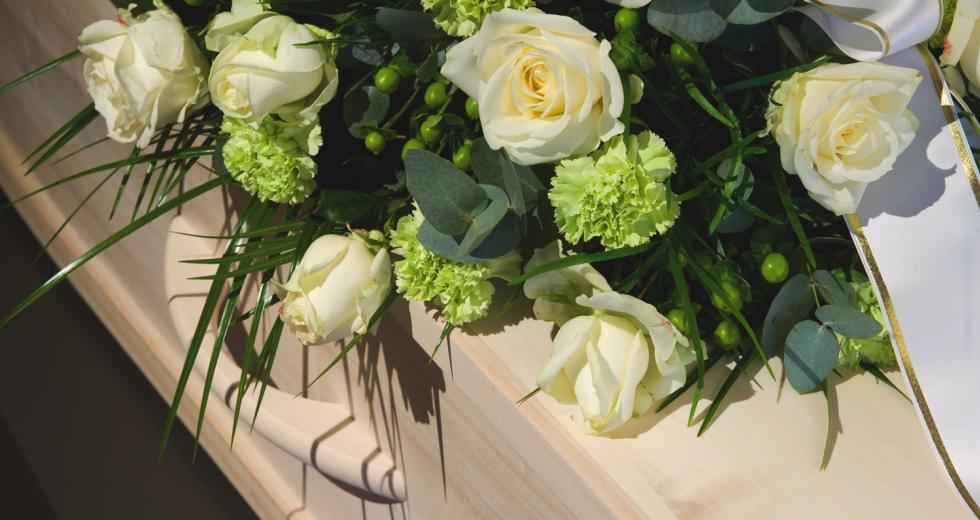To borrow from Agatha Christie, death is the only appointment we must keep.
Whether for ourselves or our loved ones, “death care” is all but recession-proof. It’s something everyone needs eventually. Collectively, it’s a $20 billion industry annually in the U.S. Yet no one likes to talk about it, and the result is by the time most people need it, their loved ones are left to stumble through the process, without any foreknowledge of the options available and what they all cost.
“Families are grieving, and funeral directors do all they can to be compassionate, while at the same time, trying to be informative on difficult decisions,” says Bob Achermann, executive director of the California Funeral Directors Association. “There’s so much families need to consider that they may not be aware of when they walk in the door.”
Fortunately, there are consumer protection laws in place, and the California Cemetery and Funeral Bureau offers a free Consumer Guide to Funeral and Cemetery Purchases to help. Ultimately, the more your survivors know in advance, the better decisions they can make during what may be the most difficult days of their lives.
Plan in Advance
Making advance funeral and cemetery arrangements (“preneed”) will provide the most peace of mind for yourself and your family. Much like an advance health directive lays out your wishes while you’re alive, a preneed agreement establishes your wishes afterward.
A preneed plan is often more than just choosing services and merchandise. It also ensures all the information needed by the funeral home is provided, which is usually more than people have on hand when they arrive at the funeral home, but is vital to obtaining a death certificate ( necessary for funeral arrangements). This includes information such as a social security number, the address where they lived, their occupation, and birthday, their military discharge information and their parents’ full names.
The cost of funerals can be as low as under $1,000 to as high as “Liberace,” so pre-planning — and arranging to pay ahead of time — is another excellent idea, but there are right and wrong ways to do it.
Annie Guthrie, counselor with Simple Traditions Cremation in Carmichael, recommends customers use funeral homes that provide a “Preneed Trust Contract.” “That’s going to be the best way to protect yourself and the money you’ve set aside,” she says.
Related: Working to Death
Things to consider in a preneed trust agreement include a guaranteed price plan that protects you from future price increases. It’s also important to ensure the funds in your preneed trust increase in value, to know where the money is invested and who the trustees are, and a written provision covering what should happen to any earnings left after expenses are paid. It’s also important to know what your options are if you move out of the area, or if you change your mind.
Many life insurance policies provide a death benefit, but be aware that not all funeral homes accept this insurance. It will be up to your survivors to front the cost and then get reimbursed from the insurance carrier.
Final Disposition
There are really three options for your final disposition: burial, cremation or donating your body to a medical school which, for some of us, is our only hope of ever getting into Stanford.
For burial, which could include traditional burial of the body or cremated remains, you’ll need to plan for the expense of a casket or urn, and a burial plot or a crypt, unless you’re eligible for burial in a veteran’s cemetery. You may need to buy an outer burial container (or vault) if that is cemetery policy, and there are associated costs for opening and closing the grave, a marker and cemetery maintenance.
“Green Burial,” described as a way of caring for the dead with “minimal environmental impact that aids in the conservation of natural resources, reduction of carbon emissions and the use of non-toxic and biodegradable burial materials, is a rapidly growing trend, especially in California. There’s even a Green Burial Council that certifies cemeteries.
Cremation is the most popular option — two-thirds of funerals now involve cremation, according to Bryan Anderson with Neptune Society of Northern California. Cremation itself doesn’t involve a lot of variables; it’s what can be done with the ashes that brings a world of options into play. Outside of burial, scattering is the most common choice, but few people know that a county permit must be acquired before ashes can be scattered anywhere, including at sea, and usually additional permission must be obtained for scatterings over any public property. If you prefer to keep your loved one’s ashes, however, a new and growing trend involves incorporating ashes into wearable art, such as jewelry and even tattoos.
Whatever your wishes may be, remember you’d never buy a house without research and shopping, and you only live in that house for a few years. Choosing a final resting place, where you could be for centuries, should be more than a last minute decision you leave to others.



